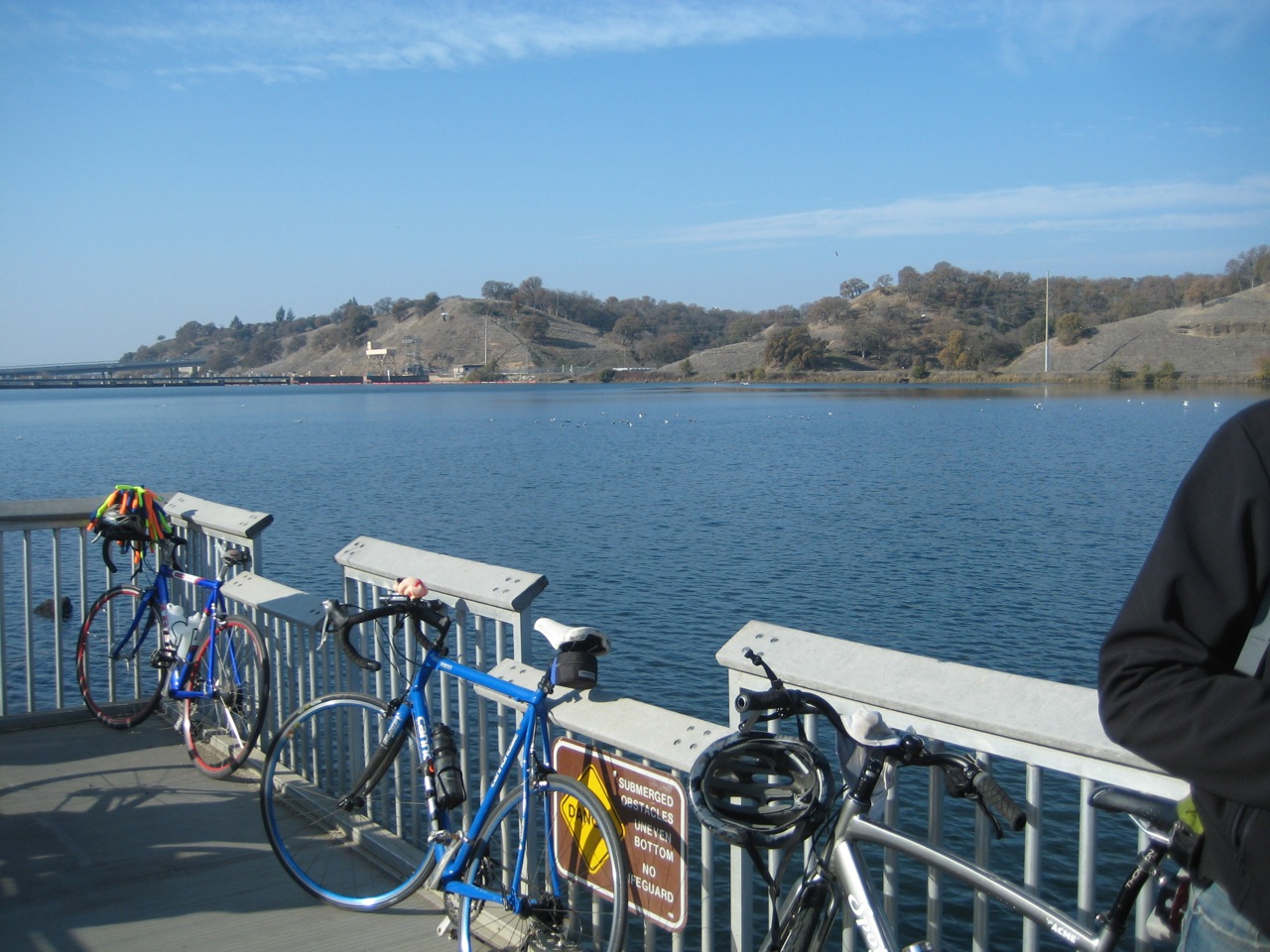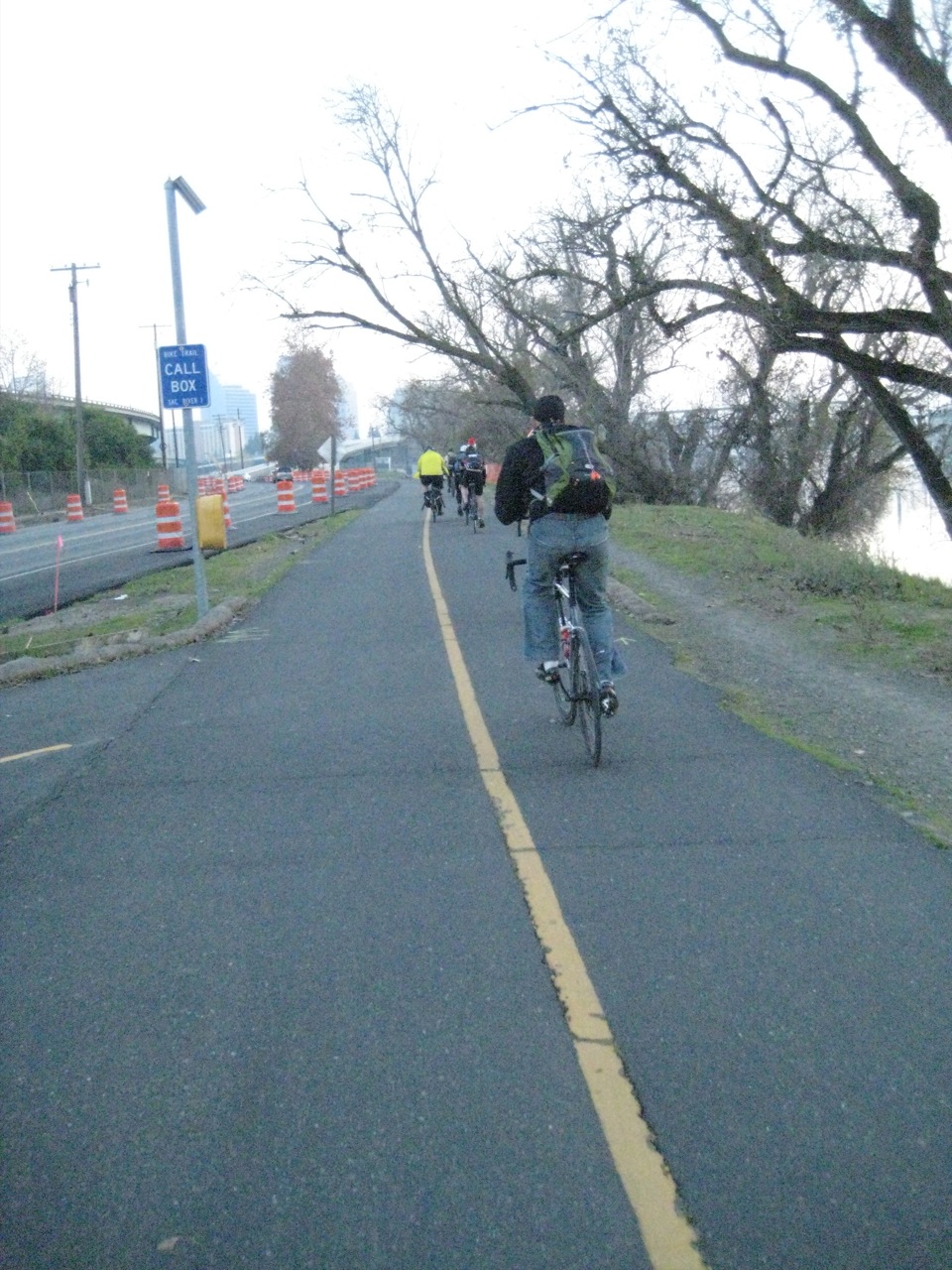Archive for December, 2011
Last-minute gift ideas for the cyclist in your life
Looking for a gift for a cyclist? Been putting off your shopping? Here are some stocking-stuffers ideas for the cyclist on your list. Price ranges are estimates; you can almost certainly find these items for more than this, faux-carbon pattern included. Most of these should be available at your local bike shop.
Lighting
If the cyclist on your list doesn't have any lighting, then anything that emits light will be an improvement. If they already have a few lights, you can contribute to their lighting themselves up like (ahem) a Christmas tree.
Rear Blinkies: The Planet Bike Superflash is well thought of. It's bright, cheap (around $35 US), and durable. (It does tend to bounce out of its included clip, so you may want to toss in a zip tie.)
Spoke lights: Cat Eye makes a set of two that goes for around $20. These things last forever, particularly on blinking mode, and drivers can't help but see the circling, blinking motion. Great for when you cross an intersection. And if they already have these, they can keep adding pairs to their wheels.
You can also get them a safety vest. These can be had for $15--20. Look for the ones made of mesh on the front and shoulders.
Bar Tape
Anyone with drop bars who rides a lot goes through a lot of bar tape. You usually can't go wrong with black, but if your friend has color-coordinated road rig, have a look at their bike before purchasing.
Tubes
Tires are something people get picky about---I know I do, buying me tires would be like trying to buy me shoes---but tubes? Feh. Avoid the cheap tubes, get Specialized or another name brand and you'll be fine.
Lube
If your friend does their own maintenance, a bottle of chain lube goes for around ten bucks. Just try to find out if they use wax or regular lube on their chain.
Tools
Multitools are usually a good bet. Park Tool is the "Craftsman" of bike tools, and their stuff is solid. $15--30. You could also get tire irons (maybe $5 if you want the expensive ones), a chain washer tool (around $25), or a pedal wrench ($15). But the most useful bike tool I own is a 3-way hex wrench. They go for anywhere from $9--20, and they're amazingly useful for tightening anything on a bike from rack screws to bottle cages to saddle rail bolts.
Clothing
Pfft. Yeah, right. I have enough trouble picking out my own bike clothes. About all you can safely get for a cyclist is socks. A pair of nice wool socks can cost $15--30, glaringly bright colors included.
A balaclava might be a safe present; these run from $10--20, more if you want a nice wool one.
A warm winter cap should work out well. Something thin that fits close to the head, so that it fits under a helmet. Bonus points for ear flaps or other ear coverage. A cap and scarf are a more stylish alternative to a balaclava, so a matching scarf wouldn't hurt.
Gloves
These can be expensive, or not. Winter cyclists often have collections of different kinds of gloves. While they'll be picky about the gloves, they often go through a lot of glove liners---and those are pretty generic. You can layer these under heavier gloves, or wear them under fingerless gloves for a little extra warmth on not-so-cold days. Glove liners run from $5--30.
Water Bottles
Your call: You can find these for a few bucks, or pay more for insulated bottles. A nice idea is to fill an empty water bottle with other knicknacks.
Happy gifting, happy holidays, and have a great new year!
A great place to ride: American River Bicycle Trail, Sacramento, CA, US
Apparently there is a long tradition with a certain group that on the shortest day of the year (or nearest convenient day), there's a bicycle ride down the American River Bike Trail. This year I was invited along by the executive director of my local bike advocacy group (which I'm on the board of).
The trail is historical and beautiful. It was one of the first trails specifically made for bicycles in the US, and one of the longest purpose-built paved bike paths in the US. It's about 30 miles long and follows the American River from Folsom to Sacramento. It's essentially 30 miles of park with a nicely paved trail running the length of it, bridges where needed, etc. Lots of parks of various sizes along the way, from tiny little "one picnic table with a view" parks to big sprawling parks. Some of the parks have big parking lots, so if you don't want to ride the whole distance you can start there.
We used light rail to get from Sacramento to Folsom and then rode the downhill/downstream direction of the trail.
The day started at 5:45am, when my bike and I were picked up for a drive down to San Rafael. We met up with somebody, rode about a mile and met up with the truck that drove us to Richmond while we nervously watched the bikes jiggling around on the overloaded rack.
In Richmond, we got on Amtrak to Sacramento, then on a light rail to Folsom. Had a bit of breakfast on the Amtrak ride consisting of food people brought along, such as some homemade gingerbread and banana bread.
The usual tradition in this ride is that there's a rainstorm and epic suffering, but the weather was fantastic this year, so I put away both upper layers that I'd brought along and went until evening in shorts and a t-shirt.
After the light rail, there was a very short ride up a hill to our second breakfast, for kicking off the ride.
Then after that, a ride over to the trail, and off we rode.
Most of the trail is lightly shaded with trees and really quite pleasant.
Our ride ended in Old Town Sacramento, a historic tourist-attracting neighborhood that happens to be right next to the Amtrak station to get us back to Richmond. We got some dinner, a few of us got lost finding the train, got some cocktails at a bar on a boat, and caught the next train.
A tale of a malfunctioning sensor
Most urban cyclists have probably encountered the problem of triggering traffic signals once or twice. Most of the time, sensors at traffic lights detect bicycles right away, and are often helpful in reducing wait-time. I know of a few intersections where the sensors are finely tuned so that the light turns green before you even get there, if nobody is coming the other way. What happens though when one of these sensors is out of whack?
I go to school in Corvallis, OR, which currently holds the record for the highest percentage of bicycle commuters nationwide. There's a particular intersection here where the under-pavement loop-type sensor simply wasn't working for me. Some friends had mentioned having problems at the same intersection as well. The sensor is for a left-turn arrow in a turn-only lane, so it probably doesn't get huge amounts of bike traffic, but I use the turn lane there, as do others. You can see the intersection in the streetview image below:

As you can see, there's a pavement indicator for where bikes should stop to trigger the signal. There is also one for the bike lane on the right. It's difficult to see in this image, but there are pavement cuts which indicate a buried sensor loop, which works by magnetic induction, not a visual cue. When I arrived at the intersection, I stopped just past the marker, and waited for the light to turn. It never did. Fortunately, the intersection has one of the new "flashing yellow" sequences, so I was able to turn left when there was a break in traffic, although I did have to wait two light cycles before I was able to make it across.
So, what to do when a sensor seems to be malfunctioning? In hind sight, I should have tried again before seeking help, but having heard similar reports from other cyclists, it sure sounded like there was a problem. Fortunately, it's easy to contact the city public works and get problems checked out. I sent an email on a Sunday afternoon, and on Monday I got a response back from them:
Thank you for the description of the concern you have at location. We went today to test the southbound left turn loop. This movement of the intersection uses a quadrapole loop for vehicle detection. In layman's terms, a loop is essentially an antenna in the pavement, tuned to a specific frequency, to detect metal objects. When a metal vehicle passes over the loop the frequency of the loop is changed and acknowledged in the traffic signal controller. A quadrapole loop looks like two long narrow rectangles, placed side by side, with a common line in the middle. We have a bike marker placed on the pavement, in the center of the quadrapole, at the very front, behind the stop bar. The bike's crankset should be placed directly over this marker. We use a Specialized MTB from Public Works to perform our bicycle detection. We feel this type of bike represent the majority of commuter cyclist in Corvallis. We did not find any issue with the southbound left turn loop at location. Every time we installed or removed the bike from the detection, it was acknowledged in-kind at the traffic signal controller. If you have any questions or concerns please contact me via email or phone.
Wow! In less than 24 hours, a work crew was sent out to check the sensor, and verified that it's properly working. I was slightly embarrassed to hear that the loop is functioning just fine and that I had not been triggering it properly, but that feeling was vastly overshadowed by how impressed I was with the city's quick and helpful response. This is the same city where a police officer was dispatched to cut loose my friend's bike when her lock got jammed (after proving ownership of course), and where the University just finished installing about 500 new bike racks across campus. No wonder so many people bike commute here!
I have yet to return to this intersection since filing the report, since I don't bike that direction often. The next time I do, I'll be sure to try the public works official's tips for positioning the bike to properly trip the sensor. It's odd that this problem occurred, since I've never had trouble with any other intersection. It's possible that the light timing is slightly different and if I had waited another cycle, I would have gotten an arrow. It's also possible that I was just not paying close enough attention to where I was positioning my cycle - if I had originally triggered the sensor, but then moved off it slightly, it might have thought that I went through the intersection during the flashing yellow cycle.
Regardless of the true cause of the light mishap, which I now know won't happen again, the lesson learned is this: if something looks amiss, don't hesitate to contact your municipality's public works department. They're here to help you out, and if my experience so far is any indication, they'll be more than happy to help.












